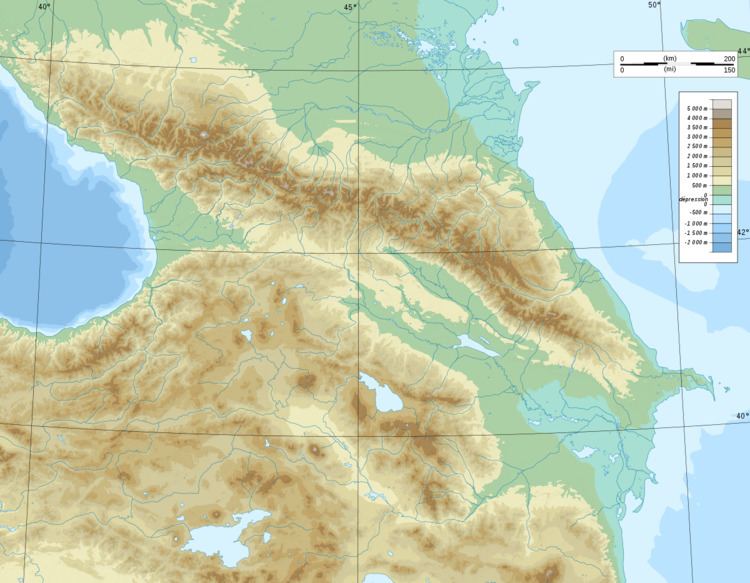Location Sukhoi Kurdzhips Period Paleolithic | Associated with Homo neanderthalensis | |
 | ||
Address 44°10'00. 40°00'00.0"E, ul. 0-ya Liniya, Rostov Oblast, Russia | ||
Mezmaiskaya Cave (Russian: Мезмайская пещера is a prehistoric cave site overlooking the right bank of the Sukhoi Kurdzhips (a tributary of the Kurdzhips River) in the southern Russian Republic of Adygea, located in the northwestern foothills of the North Caucasus in the Caucasus Mountains system.
Contents
Neanderthal
Initial excavations in the Mezmaiskaya cave recovered Mousterian artifacts of the Last glacial period, dated to about 35,000 B.P. and older.
However, a rib fragment from the partial skeleton of a Neanderthal infant found in the cave was radiocarbon-dated to 29,195 ± 965 years B.P. and therefore belonging to one of the most recent individual Neanderthal specimens. The date accuracy obtained from the bone rather than from associated assemblages accounts for the most reliable date available.
Ancient DNA was recovered for a mtDNA sequence showing 3.48% divergence from that of the Neanderthal 1, found some 2,500 km (1,600 mi) to the west in Germany. Phylogenetic analysis places these two specimen in a clade distinct from modern humans, suggesting that their mtDNA types have not contributed to the modern human mtDNA pool.
Three Neanderthal individuals were recovered from the cave. The first, Mezmaiskaya 1 is the almost complete skeleton in a well preserved state due to calcite cementation that covers and holds the arrangement in place. It was assessed to be an infant about two weeks old, making it the youngest Neanderthal ever recovered. Although no burial pit was found, circumstances suggest that the body was buried intentionally, explaining the good state of preservation and the lack of scavenger marks. Only the skull fragments of a Neanderthal child - Mezmaiskaya 2 - were found and a recovered tooth was assigned to Mezmaiskaya 3.
Fauna
Faunal remains show a very low degree of weathering, with many bones having traces of stone tool cuts and carnivore modification. The most common large mammals are steppe bison (Bison priscus), Caucasian goat (Capra caucasica), and Asiatic mouflon (Ovis orientalis). Reindeer (Rangifer tarandus) remains were encountered for the first time in the Caucasus.
Although most of the smaller vertebrate remains appear to have been accumulated by nonhuman processes (for example, owl predation), the majority of the ungulate remains probably represent animals hunted by the occupants of the Mousterian culture.
Analysis of the animal bones found in the Mezmaiskaya Cave revealed that during the middle and late Paleolithic four kinds of buffalo lived in the area.
Description
The cave entrance is a hole in the cliff several meters high, behind which the course is narrowed to a few meters, but almost all along remains quite high. Within a few tens of meters of the entrance to the cave, the floor is transformed from rocky to clay.
Geology
Evidence recovered from the cave suggests that the Campanian Ignimbrite eruption around 40,000 years ago may have been a setback for the Neanderthal, with an as yet only postulated eruption contributing to their demise about 29,000 years ago.
